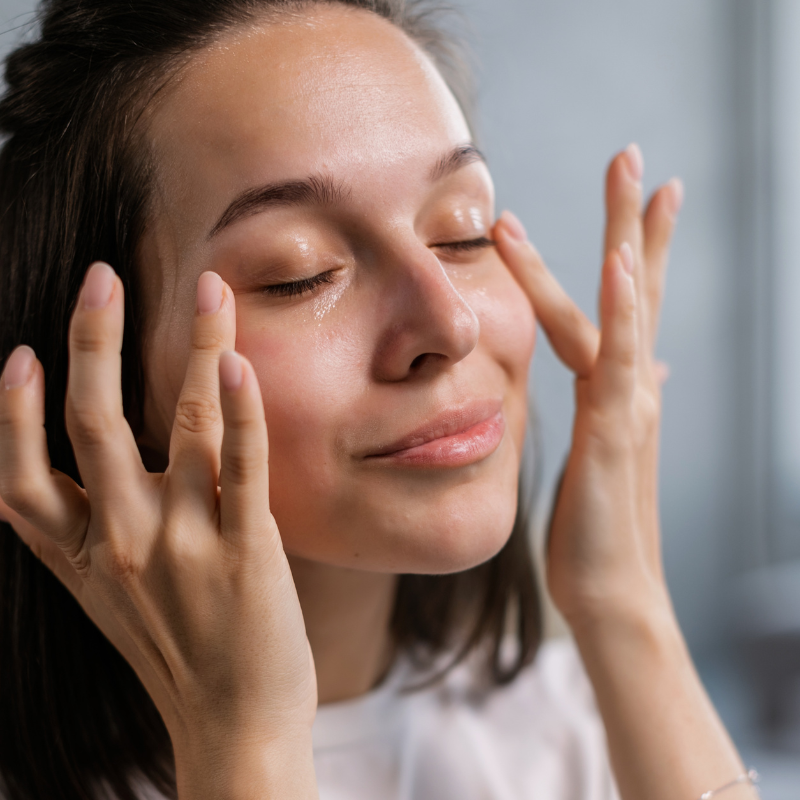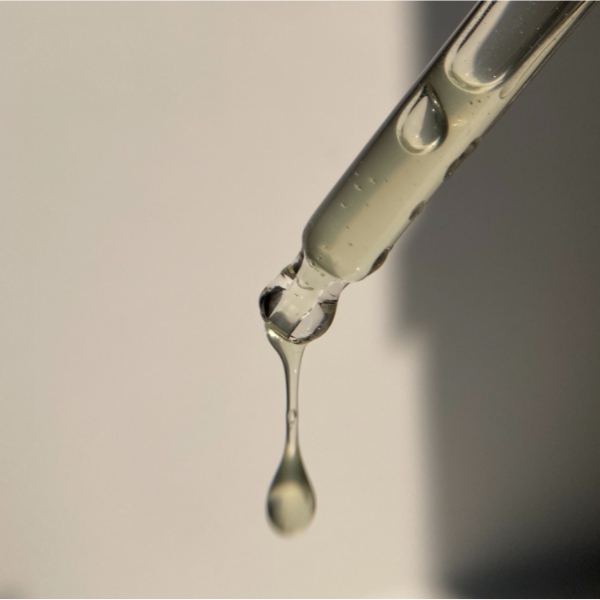The Importance of Emulsions in Skincare, Part One
by Deborah Duffey, Chief Product Development Officer and President April 15, 2022

Emulsions might not be on your mind when picking out your next moisturizer, but for those of us who put a lot of thought into what goes on our skin, they probably should be.
Emulsions make up nearly every skincare product with more than one ingredient, and you won’t need a science degree to grasp what they are. Understanding what emulsions are can help you see through marketing-speak and assess the product itself. It can even help you understand what a product might feel like, just by looking at the ingredients list.
In this first part of a two-blog series, we’ll take a bird’s-eye view of emulsions. We’ll review what they are, what exactly the difference is between creams and lotions, begin to cover nano emulsions (and why they’re very different from nanotechnology), and the emulsions of a few of our products to help you understand them in the real world.
And in the next blog, we’ll go deeper into emulsion types and nanotechnology to share exactly how nanotechnology in skincare works compared to simple nano-emulsions. Plus, we’ll help you better decipher when brands market their products with “nanotechnology” when this isn’t actually the case.
What is an emulsion?
What are emulsions, anyway? Emulsions are the blend of two liquids that wouldn’t typically be mixed together. A simple example is vinegar and oil—when we make salad dressing, we can actually watch the oil disperse within the vinegar as we whisk it together. This same occurrence is happening in our skincare products but we only see the final, fully emulsified formula.
In skincare, emulsions are often an oil and water that are mixed together, with other ingredients included to stabilize the formula, along with active ingredients or other additions. Depending on the ingredients as a whole, emulsions can be as thin as water or thick as butter. The particle size can be large (if it isn’t a nano or micro emulsion, which we’ll discuss soon), and if not supported by penetration enhancers, the product will work at the very surface level of the skin.
You might also see “emulsion” used as a name for a product itself, especially in Korean beauty products. In this case, emulsions are typically milky-looking and watery in consistency—think of them like lightweight moisturizers. They can be great as a stand-alone moisturizer for acne-prone or oily skin types, or as a boost of hydration for dry skin types. Despite going by the same name, these emulsions are different from the emulsions we’re discussing here (although these “emulsions” are also emulsions!).
What’s the difference between a cream and a lotion?
If you’ve ever been unsure if you needed a cream or a lotion while staring at a wall of moisturizers at the store, an understanding of emulsions might have helped you make a decision.
To give the most basic definition, the major difference between creams and lotions is the amount of oil and water used in their emulsions—lotions have more water content and less oil, while creams have more oil. If you compare the feel of a lotion and a cream on your skin, this difference becomes even more obvious. Lotions may be easier to rub into skin, and can “sink in” more quickly. Meanwhile, creams can feel like butter (that’s the oil content we’re talking about), can be thicker, and leave more of a film on skin before disappearing.
Nano-emulsions and nanotechnology in skincare
Within emulsions—and within the water and oil and all the ingredients that make up a formula—we don’t see a difference between the individual particles. If we were to take a microscope, though, we’d see a variation in the particle size of our emulsions between different products. The size of these particles and what they look like is a clue into how effective a product might be.
Typical emulsions on their own aren’t always so effective at delivering actives into the skin. And in some cases, this is okay—sometimes our lotions and creams are designed to settle on the surface of the skin. Other times, like when the product is designed to be anti-aging, for example, it’s important that the ingredients can penetrate the skin in order to make changes where it matters.
This is where it’s important to understand nano-emulsions and nanotechnology in skincare. A product that claims to have nano-emulsions in its formula is not the same as a product that uses nanotechnology in the form of nanoencapsulation. The technologies are very different. Nano and micro emulsions, when it comes down to it, simply allow products to have very small particles. There are benefits to this, like how the product feels on the skin. Think of nano-zinc oxide as an example. Zinc oxide is typically thick and leaves behind a white cast, but nano-zinc is much easier to work with.
Unlike nano and micro emulsions, nanoencapsulation actually increases the effectiveness of products. It goes through an entirely different process to create nano-encapsulated ingredients, and instead of just making smaller particles, those particles are surrounded in a barrier that allows them to be delivered in different layers of the skin in a time-released manner.
In our next blog, we’ll go deeper into these differences and what to look for when choosing skincare products to make sure they’re actually using nanotechnology and not just nano-sized particles.

How to choose emulsions for your skin type
The best types of products for your skin depends on a few factors, and it can also change over time and with the seasons. A general rule is that oiler skin and hotter, humid climates should go for lighter formulas, while dry skin in cold climates should use heavier creams. But even oily skin can use a heavier moisturizer once in a while; for example, to lock in moisturizer overnight. Remember that emulsions with more oil tend to be heavier, while those with more water might be more appropriate for those prone to acne.
All Kara Vita products use nanotechnology—not just nano-emulsions—to deliver active ingredients into skin.
Hydrating Complexion Mist is an extremely lightweight option for moisturizing skin. The mist is used after cleansing skin to tone and remove excess dirt and makeup, but because it’s so hydrating it acts as a moisturizer as well. Although this is a lightweight hydrator, it’s actually a great choice for those with dry skin who might find other toners remove too much oil. This is a very light emulsion, and uses a base of water.
Everyday Skin® Penetrating Lotion is gentle enough for everyday use, but strong enough to treat skin damage (it was originally formulated for burn victims). It features oil high up on the ingredients list, which pairs the lightweight feel with an occlusive, healing texture. Indulgence® is a creamy, powerful hydrator that gets its benefits and silky feel from oils like avocado, sweet almond, sunflower seed, and jojoba. These make this moisturizer soothing for red, itchy, and irritated skin.
Indulgence® is a creamy, powerful hydrator that gets its benefits and silky feel from oils like avocado, sweet almond, sunflower seed, and jojoba. These make this moisturizer soothing for red, itchy, and irritated skin.
Secret Code DNArescue™ is an anti-aging mist that not only uses nanotechnology, but it’s also a Phase Inversion Temperature, or PIT, emulsion. This means the formula is highly stable and extremely efficient at delivering active ingredients into the skin. We’ll cover PIT more in depth in part two of our emulsion series blogs.




